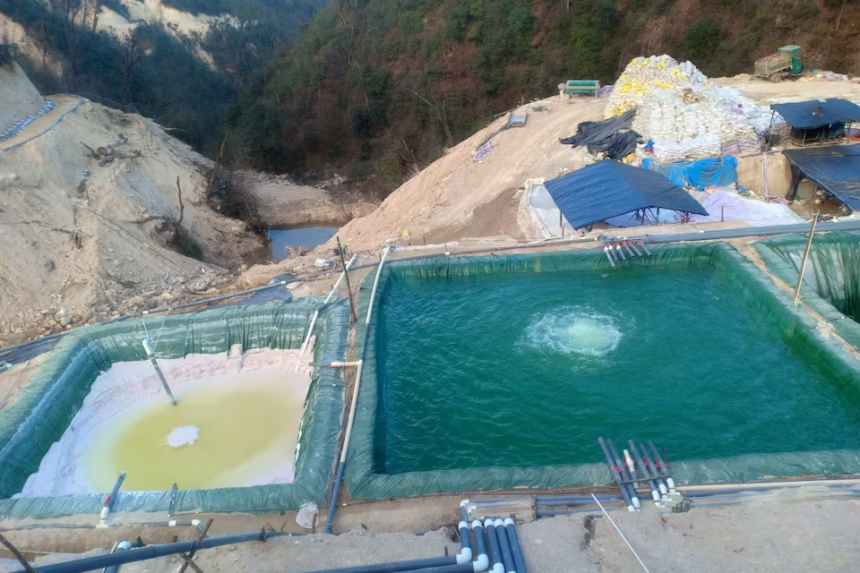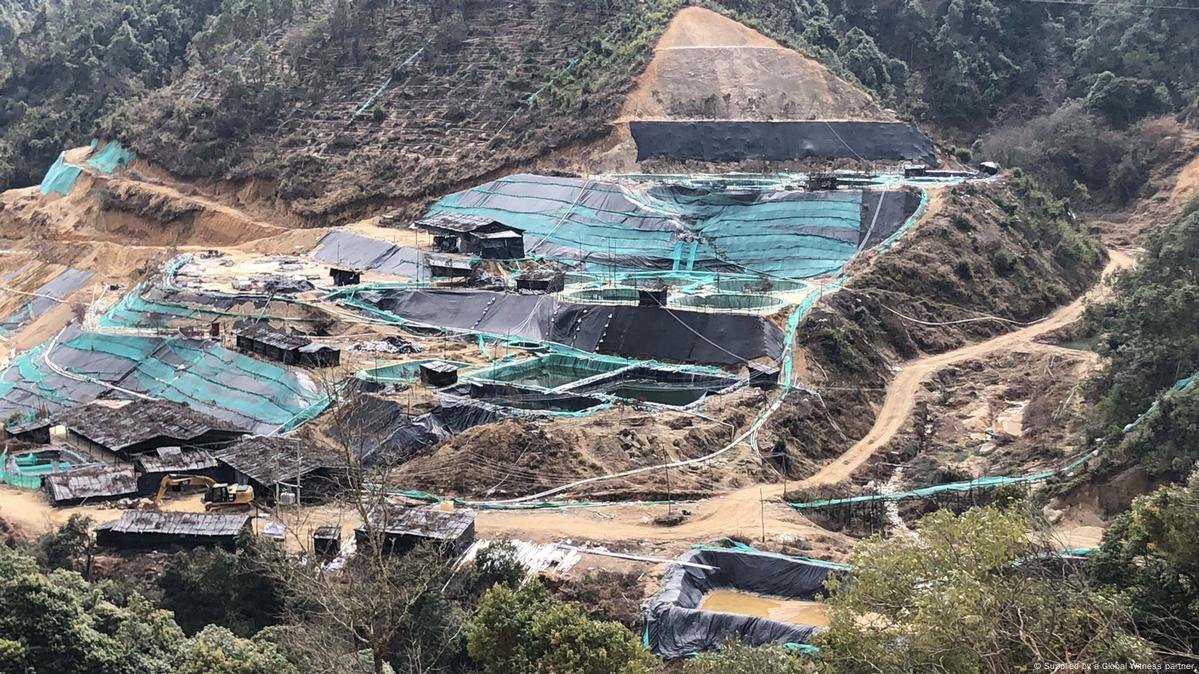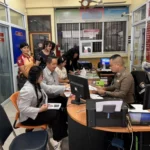CHIANG RAI – The Shan State and people living along the Mekong River are facing new environmental risks as rare earth and manganese mines grow in number in Myanmar. The Tai Yai Human Rights Network has released satellite images and videos confirming the discovery of 19 rare earth mines on high mountains in Myanmar’s Shan State.
Several of these mines discharge wastewater into the Nam Loi river, while others release it straight into the Mekong across from Luang Namtha in Laos. This does not even count the many manganese mines in the area.
The Tai Yai Human Rights Foundation issued a statement showing that satellite photos and video confirm up to 19 rare earth mines in Mong Yawng and the eastern areas of Shan State. These regions fall under the Special Region 4, controlled by the National Democratic Alliance Army (NDAA) or Mong La Army. These mines sit just 40 kilometres from the Mekong River.
According to the statement, satellite images from early 2021 showed only three mines in the area, and those soon became inactive. Over the past four years, however, mine construction picked up at a rapid pace, pushing the total to 19 active rare earth mines in eastern Shan State.
All mines share similar features to those found in the Kachin state: multiple circular ponds are lined up for mineral processing. Images captured thousands of chemical sacks, used for separating minerals, stacked near the mines. At the foot of the mountains, pipelines deliver chemicals into the soil.
Most of these rare earth mines are now active and easy to spot with their characteristic ponds. Sixteen mines are operational, while three are under construction. By May 2025, construction was already underway at these sites.
The rare earth mines are mostly located in Special Region 4, under NDAA influence. They sit atop high mountains, about 4,000 to 5,000 feet above sea level, about four kilometres from the Myanmar–China border.
Wastewater from these mines flows into mountain streams, then into the Nam Loi river, which feeds into the Mekong at Sob Loi opposite Luang Namtha in Laos. The Golden Triangle in Chiang Saen district, Chiang Rai, sits about 125 kilometres from this spot, and four other mines to the south of the Nam Loi discharge their water directly into the Mekong.
Alongside rare earth operations, several other types of mines, especially manganese, line the Nam Loi river. These stretch along more than eight kilometres of the Myanmar–China border mountains and cluster near the rare earth mining sites.
In 2006, the Lahu National Development Organization (LNDO) reported that Chinese workers, more than 1,000 strong, operated these manganese mines. This had serious environmental and health effects on nearby villages like Muang En and Muang Loy La, pointing to the rapid growth and impact of manganese mining even before the rare earth boom.
The statement also mentioned that on 7 August 2025, Mr. Aung Aung, a Shan State minister appointed by Myanmar’s military government, and Major General Solai, the regional commander for the Golden Triangle, visited Mong La, the capital of Special Region 4, for talks with NDAA leaders. Details of their meeting remain private. A day earlier, this group met with United Wa State Army (UWSA) leaders in Special Region 2, at both Pak and Pang Sang towns.
Recent satellite images since mid-2024 show two rare earth mines under construction in the Mong Sat district on the Thai-Myanmar border near Mae Ai, Chiang Mai. These sites lie 3.6 kilometres east and 2.6 kilometres west of the Kok River, raising fresh concerns for water safety and the health of local communities.















